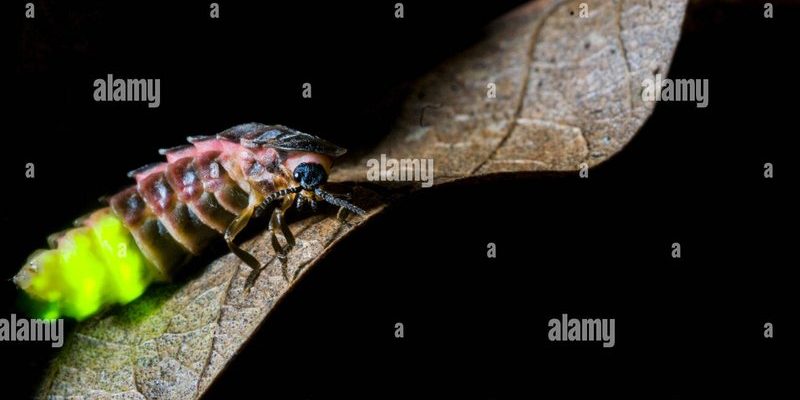
Picture this: you’re wandering through a dense forest or along the banks of a serene river in New Zealand or Australia. If you take a moment to look closely, you might spot the glowworm’s signature bluish glow. It’s a signal that they’ve found just the right spot—one that provides them with everything they need: moisture, food, and safety from predators. Let’s dive into the fascinating world of glowworms and explore their habitat preferences in the wild.
What Are Glowworms?
Before we discuss their habitat, it’s essential to know what glowworms actually are. Despite the name, glowworms are not worms at all. They’re actually the larvae of certain types of beetles, primarily from the *Lampyridae* and *Arachnocampa* families. These creatures have a unique ability to produce light through a chemical reaction in their bodies, a phenomenon called bioluminescence.
Glowworms use their glowing light to attract prey, usually small insects attracted to the light. Once the prey is close enough, the glowworm captures it using sticky silk threads. This fascinating hunting technique is a key reason why understanding their habitat is important. If we can identify where glowworms thrive, we can better understand their diet and survival strategies.
Moisture-Rich Environments
Glowworms have a strong preference for habitats that are rich in moisture. They are typically found in damp, dark places like caves, forests, and riverbanks. Why is this moisture so crucial? Well, glowworms need a consistent level of humidity to survive. Without it, they can easily dry out and perish.
These insects thrive in areas where they can find decaying plant material and organic matter. This is not just their home; it’s their dinner table too! Decaying leaves, fallen trees, and damp soil provide the nutrients they need to grow. You might find them in places like lush rainforests, especially where there are waterfalls or streams. The moisture around these areas creates the perfect microclimate for the glowworm to flourish.
Darkness and Cover
Light pollution is not just a nuisance for stargazers; it can also disrupt the delicate balance of life for glowworms. These insects prefer dark environments that shield them from bright lights. Too much light can deter their prey and make it harder for them to hunt effectively.
Nestled in shaded areas under rocks, dense vegetation, or overhanging cliffs, glowworms find the cover they need to thrive. This protection helps them avoid predators and stay hidden while they wait for dinner to come by. If you’re looking for glowworms in the wild, seek out environments where there’s dense foliage or natural cover that blocks out artificial light.
Temperature Preferences
Temperature plays a significant role in the habitats of glowworms. These insects generally prefer mild climates and are often found in areas where the temperature remains consistent. Extreme heat or cold can be detrimental to their survival.
In warmer regions, glowworms tend to be more active during the cooler, wetter months. In contrast, in cooler areas, they might be seen during the summer when conditions are more favorable. The key takeaway is that glowworms thrive best in environments where they can maintain their preferred temperature, avoiding extremes that could endanger their lives.
Location and Geographic Range
Glowworms are mostly found in specific geographical regions, primarily in New Zealand and Australia. In New Zealand, for instance, you’ll find them in places like the famous Waitomo Caves, where thousands of visitors marvel at their stunning glow.
They also inhabit parts of Europe and North America, but those species tend to be different from the ones found in the Southern Hemisphere. The specific locations serve as a reminder of how these insects have evolved to fit into various ecosystems. If you’re planning to see glowworms in the wild, focusing on these specific regions will increase your chances of encountering them.
Impacts of Human Activity on Glowworm Habitats
Unfortunately, human activities pose significant threats to glowworm habitats. Deforestation, pollution, and urbanization can disrupt the delicate balance these insects rely on. For instance, when forests are cleared for development, it not only removes the glowworms’ cover but also reduces the organic matter they need for nourishment.
Light pollution is another concern. Cities that shine brightly at night can confuse glowworms, making it harder for them to find prey. To protect these magical creatures, efforts like habitat restoration and awareness campaigns are essential. We all play a part in ensuring that glowworms continue to light up our nights.
Conservation Efforts
Given the various threats to glowworm habitats, conservation efforts are becoming increasingly important. Many organizations are focusing on protecting natural habitats and raising awareness about the importance of these insects.
For instance, preserving natural forests and implementing light pollution controls can significantly benefit glowworm populations. Local communities are also offering tours in glowworm-rich areas, helping to educate people on their behaviors and habitats while promoting eco-friendly practices. By supporting these efforts, we can help ensure that future generations also get to enjoy the enchanting glow of these fascinating insects.
In conclusion, glowworms are remarkable creatures that thrive in specific habitats rich in moisture, darkness, and organic material. Their unique lifestyle and the enchanting glow they produce make them a significant part of our ecosystem. By understanding their habitat preferences and the threats they face, we can take steps to protect these captivating insects for years to come. So, whether you’re a nature lover, a curious traveler, or simply someone who enjoys a little magic in life, keep an eye out for those glowing lights in the wild. You just might witness the wonder of glowworms in their natural habitat!

